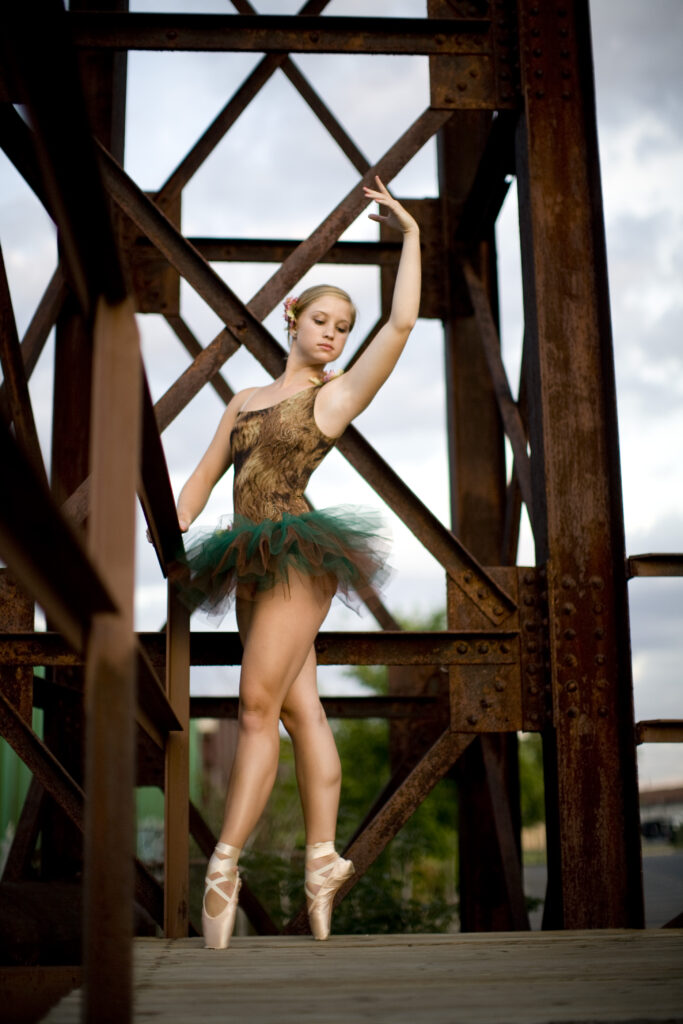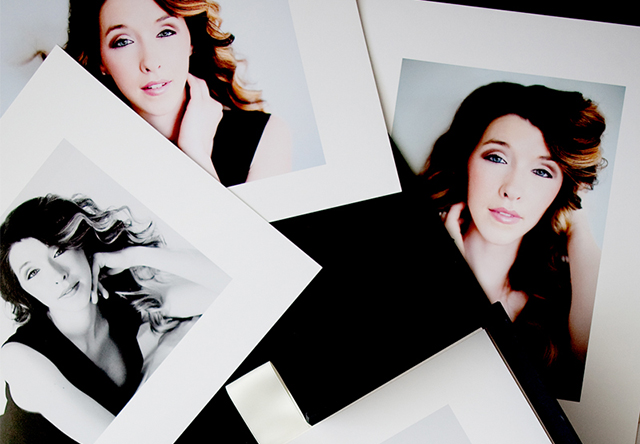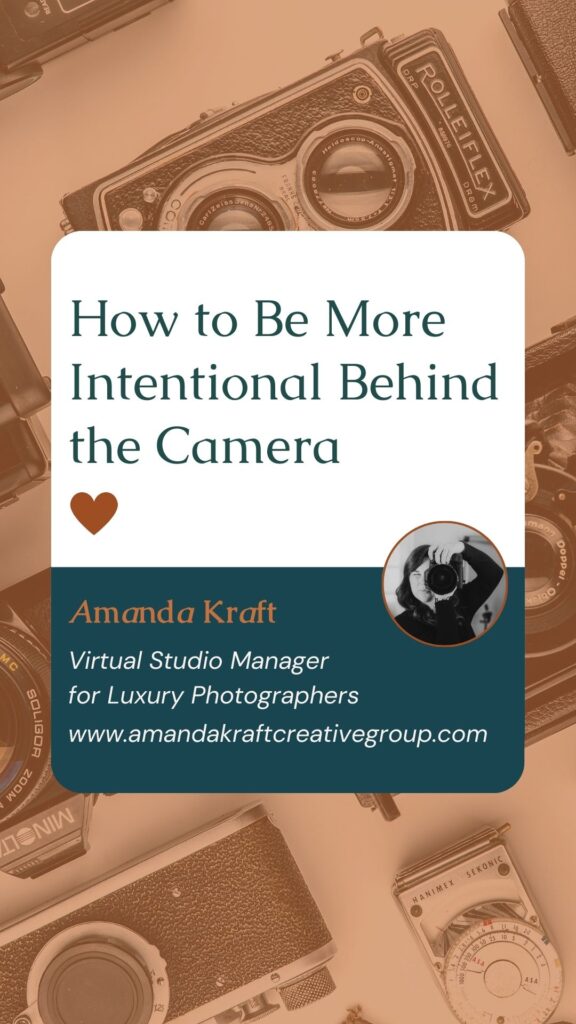Browse around
Hey Photographer!
I’m a Virtual Studio Manager, Creative Business Strategist, and former photographer turned operational powerhouse.
I'm Amanda
With a no-BS approach, a can-do attitude, and my loyal fur missile, Oakley, by my side, I’m here to help you cut through the noise and build a business that works as hard as you do. Let’s take those big, scary dreams and turn them into real, tangible wins—one bold move at a time
Master the Art of In-Person Sales
FOR PHOTOGS
Free Guide: Find the Perfect Studio Manager
VIRTUAL SUPPORT
3 Mistakes I Made in My Photography Business
REAL TALK
What I am Currently Reading
EVERY DAY LIFE
I’ve been in the photography game for over 20 years, capturing more than 100 weddings and photographing over 200 high school seniors. I’ve made my fair share of mistakes both in my business and behind the camera. Keep reading as I share how to be more intential behind the camera and how this one thing can transform your photography business.
A Conversation with a Mentor Shifted My Intentionality
One day, I had a portfolio review with a mentor. They gave me great feedback but also some advice that hit hard: be more intentional.
At first, I was a bit hurt—I thought I was already being intentional! But then it hit me that I really wasn’t. Once I started being truly intentional behind the camera, my work took a huge leap.

So, let me ask you: Are you being intentional behind the camera?
Lean in, because what I have to say might surprise you. You might not be as intentional as you think.
For the first ten years of my business, I was creating solid work, and my clients seemed happy. But I felt like I wasn’t mastering my craft the way I wanted. To level up, I needed to shift two things becoming intentional behind the camera and capturing images with an end product in mind:
Being Intentional Behind the Camera
This meant slowing down, being in the moment, but not overshooting a setting or scene. If the pose, background, lighting, or energy were off, we’d abandon the concept and seek a new one.
As a virtual studio manager, I cull images for several photographers, and one difference I see between veterans and newbies is the number of images they capture in a given pose or scenario. More does not mean better.
For example, instead of taking 20 shots of the same pose, try to get it right in fewer clicks by adjusting the composition, lighting, or directing your subject better.
eased online sales from guests, and allowed the couple to relive the moment rather than talk about how Aunt Sally’s hair was styled.


Storytelling and Product Designing
When my business was in its startup phase, I didn’t have the courage to ask clients about their desired outcome or how they planned to display the photos. I just wanted them to say yes to working with me. I feared that asking more questions would lead to them questioning my abilities or their need for a photoshoot.
Once I started asking questions, I could design photoshoots to meet their needs and shoot with the end product in mind.
Can I tell you a secret?
An online gallery isn’t the end product—it’s what stands between you, your clients, and the end product. The end product should be physical and tangible, not something that sits on a desktop or in a cloud folder, never to see the light of day.
In my studio, I believe clients need to walk away from our photoshoot with something they can see and feel—this could be a wall portrait, a collage printed on metal, or a keepsake album.
Digitals were not the end product within my studio and even today, if I were operating my business in 2024-2025, digitals still wouldn’t be a “thing” in my business. A gift with purchase? Yes. But not the finished product.
Being intentional behind the camera is crucial, regardless of the context of the photoshoot or event. This means looking through the viewfinder to ensure nothing is poking out from your client’s heads, shifting slightly to remove shadows from faces, and for the love of all things photography, stop photographing the back of people’s heads. Yikes.
Let me rant on this for a moment.
As a new photographer, especially in the wedding industry, I was nervous about engaging with guests at weddings. I always felt intrusive or just in the way. One event, it hit me while on the dance floor: no one wants to see photos of the back of people’s heads. From that moment on, I stopped the nonsense. I would engage with couples on the dance floor for a quick photo, or in a receiving line, I’d photograph over the couple’s shoulder to capture the guests in attendance. These tiny but impactful shifts opened the door for better portraits, incr
Digital Files and Their Place
Let’s talk about digital files for a moment because I’m sure I’ll get some criticism for my approach to “selling digital files.” There are several niches within the photography industry where the end product will be a digital file. Off the top of my head, these include food bloggers, magazine clients, fashion clients, personal branding and headshot clients, and social media content creators. These clients are completely different from a business-to-consumer model and therefore are not included in my above conversation about selling the end product as a tangible deliverable.
However, the rest of what I have to say about being intentional still applies if you are providing digital files only. And let me add one more point—you better be charging an industry-standard rate per image and not giving away an entire gallery of images for pennies on the dollar! Charge your worth regardless of the deliverable.

How to Be More Intentional Behind the Camera
Regardless of the photoshoot or event context, being intentional means paying attention to details. Here are a few ways to achieve that:
Use a Tripod for Family or Group Portraits
- This allows you to plant yourself in one spot, control the scene, and move the key players in and out. It also lets you step back from the camera, view the scene with your eyes, and check for issues like sunglasses on heads or flowers poking out from people’s heads and ears.
Use a Handheld Light Meter
- Using a handheld light meter forces you to slow down. This improves the lighting and composition of your images and decreases post-production time.
- Yes, your shiny new Canon or Nikon has a GREAT light meter, but if you are wishing to slow down and be intentional this is a great way to do it.
Give More Direction
- Stop hoping and waiting for things to happen. Give direction to create moments. Many images that clients love are orchestrated to look natural. By giving more direction, you can capture better images and tell stories more effectively.
Abandon Shots That Don’t Work
- If a moment isn’t working, move on. Don’t keep capturing more images in a setting that isn’t right.
Cull Images Intentionally
- Overdelivering images can overwhelm clients. Be ruthless in your culling.
- Don’t deliver multiple images of the same pose, outfit, background, and expression. This doesn’t give your clients choices; it gives them overwhelm.
Photograph with an End Product in Mind
- Always photograph with the deliverables in mind.
- Personally, I like to approach each photoshoot with the goal of creating an album or image box for my clients. This challenges me to produce 30-50 must-have, can’t-live-without images.
- When in doubt, ask your clients how they plan to display their portraits.
- Tailor your shoot to those items. It’s easier to sell what they want than to shoot without a plan and hope they purchase.
Once I became intentional behind the camera, my work transformed. I was delivering collections of portraits I was proud of, and my clients sensed this too. My sales average order quickly rose from barely $400 with an online gallery to almost $2000 with in-person sales, and wedding clients invested around $8000 for handcrafted heirloom wedding albums.
Strive to be intentional behind the camera, and watch your portfolio change and your end product sales increase. If you’re curious about ditching online galleries and implementing in-person sales, check out my new e-book, The Art of Selling: Mastering In-Person Sales.
If you need help with culling or culling specifically to sell wall portraits or keepsake albums, I invite you to schedule a 1:1 call with me to breakdown your current sales process and how we can improve it.

Pin
Share
Leave a Reply Cancel reply
Marketing Guide for Photographers
FREEBIE
Wedding Photographer
Social Media Templates
NEW IN THE SHOP
Find the Perfect Studio Manager
Freebie
Master the Art of In-Person Sales
For Photogs
3 Mistakes I made in My Photography Business
real talk
EVERY DAY LIFE
What I am Currently Reading
You May Also
Previous Story
next Story
I'm so glad you're here, stick around, there's so much to see,
xo, Amanda
